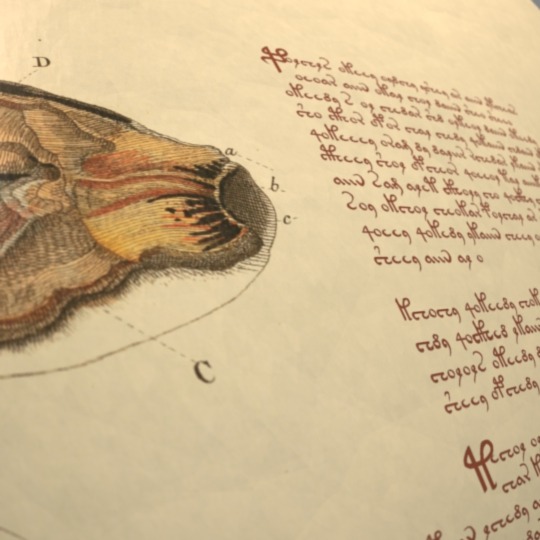
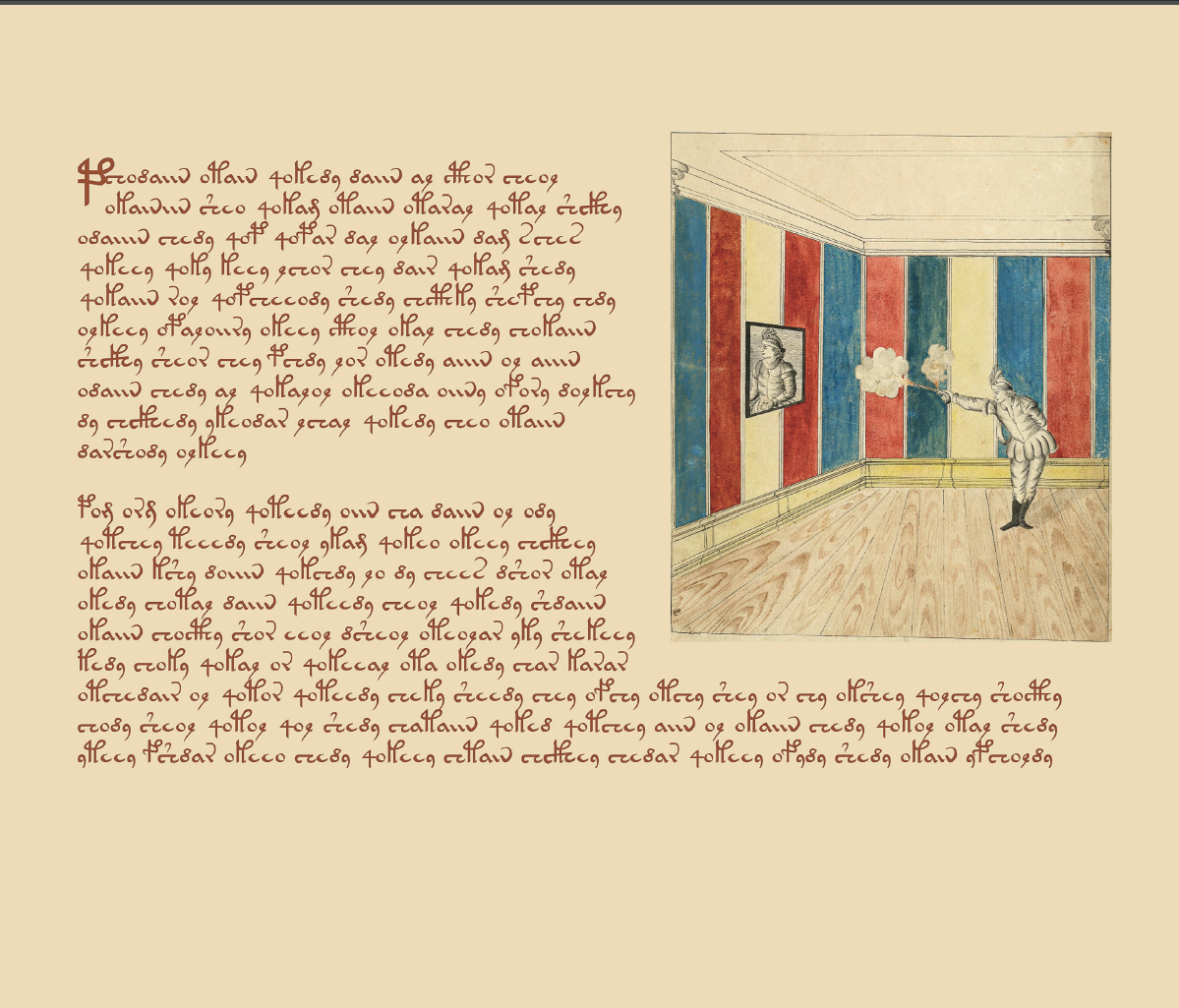
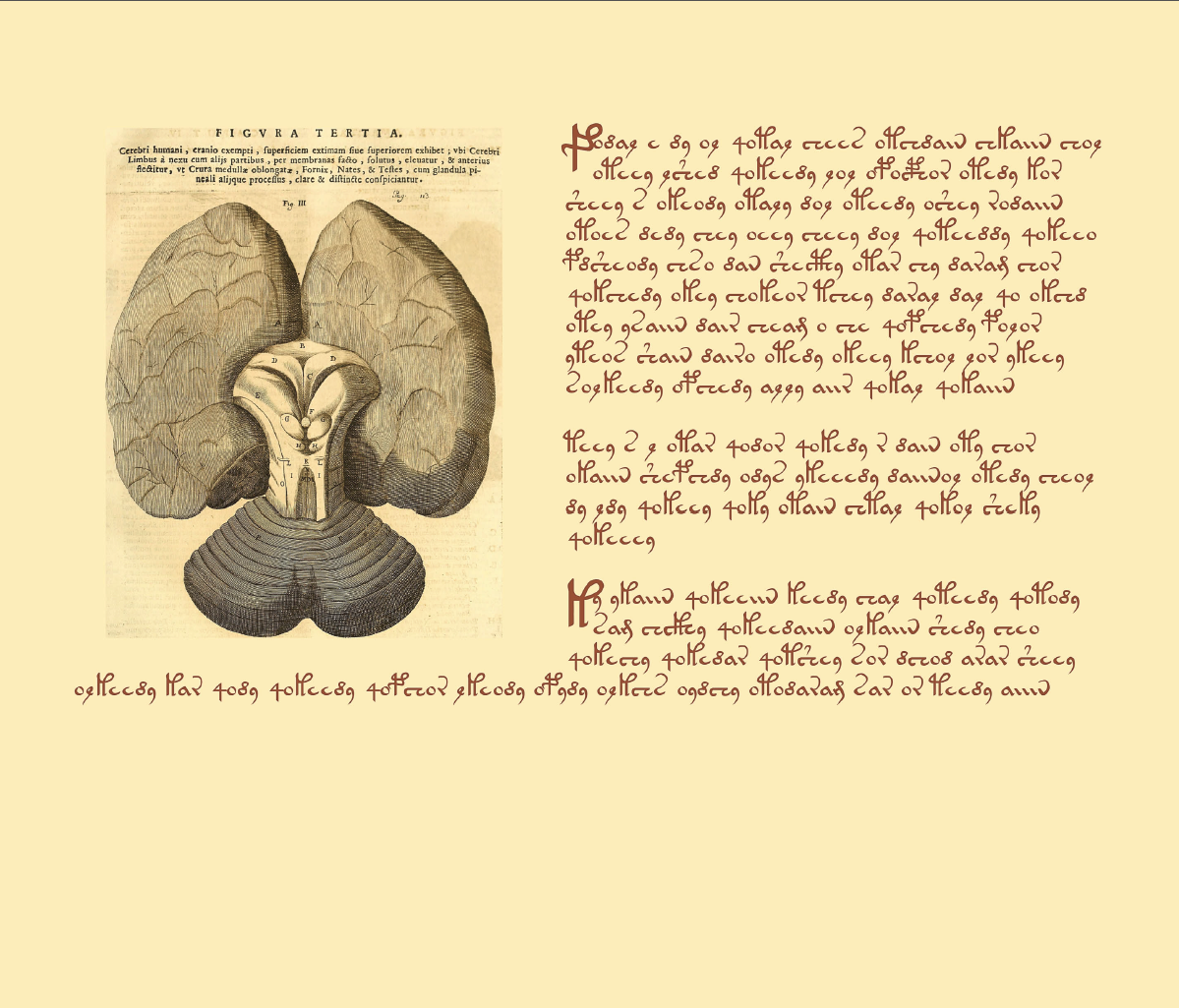
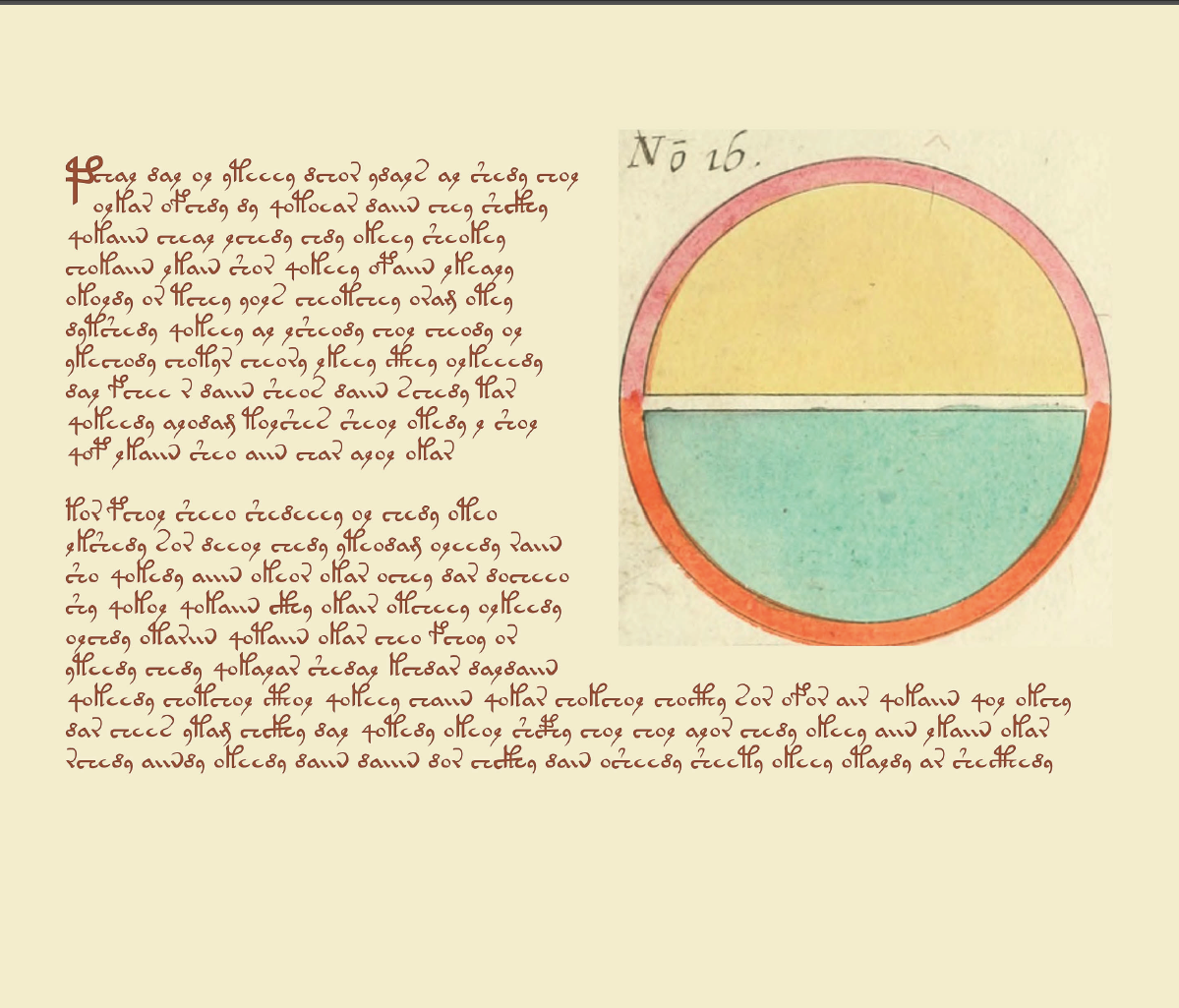
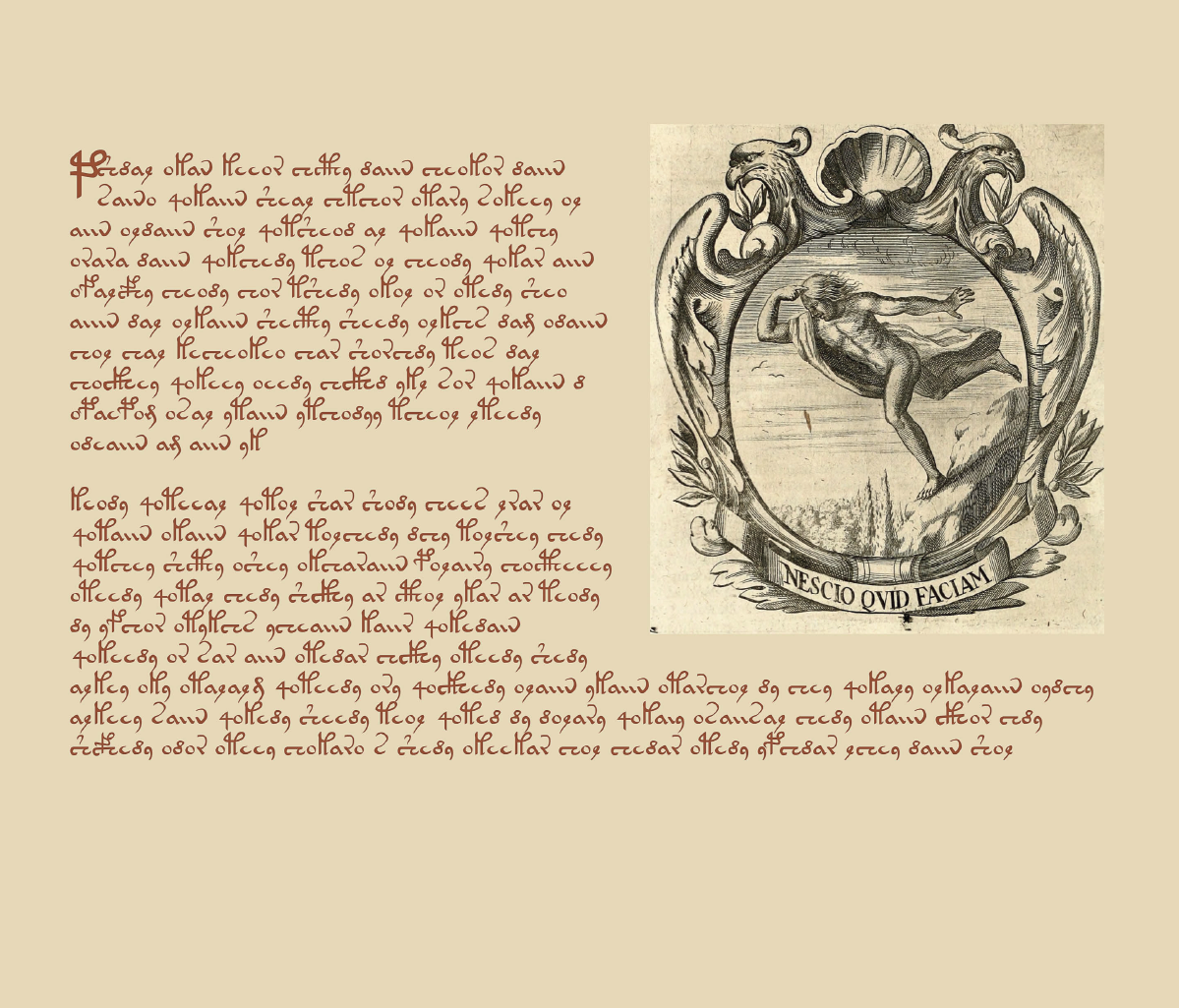
Seraphs
The Voynich manuscript is a mysterious, untranslatable codex that has inspired many artists over the years (including Codex Seraphinianus). For NaNoGenMo 2014, Liza Daly had the delightful idea to generate a new Voynich manuscript.
The result is something that embraces the current limitations of generative processes. Generating something that has both conceptual meaning and moment-to-moment sense is difficult, generating something that verges on making sense while not bothering to conform to the dictates of English is still hard, but more reachable. I think this is a concept worth exploring for your own generators: try making something that makes sense to the machine but doesn’t bother to explain it to the human viewer.
Success at NaNoGenMo is a nebulous, personal concept, but I think Seraph succeeds.
